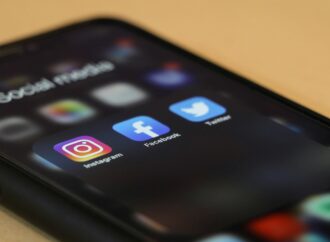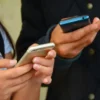The average American spends over seven hours daily on screens. That means most of us live about half our waking hours inside a digital vortex.
Engagement with the digital world is no longer an occasional pastime, an interruption in an otherwise analog existence. For many, it’s not a tool, but a way of life since vast portions of the population keep a digital device in their hand perpetually.
How does this life differ from the way humans lived for millennia?
As a system built on zeros and ones, digital life concerns itself with what is measurable and manipulable. One does not engage with the digital world except to get something out of it – productivity, money, information, entertainment. Analog life, however, sometimes involves problem solving, calculation, and control, but not always. Analog life allows space to simply be, to exist, to contemplate.
Digital life emphasizes speed and efficiency. Newer computers, phones, or tablets are expected to offer lightning-quick reaction times. If our internet connection or computer processor lags, even for a few seconds, we become frustrated. Analog life, conversely, moves slower and with greater fluctuations in the experience of time. Some moments pass quickly, others more slowly, providing an awareness of the holistic existence in which we are but one small part.
Digital life allows the mind to roam over vast ranges of information with total license, flitting from one image, idea, or factoid to another in milliseconds. The scope of digital life – which seems to make the whole world and all human knowledge present to us in a single glance – has no precedent in human history. Analog life, on the other hand, does not offer such a vast range of knowledge. The person living an analog life is limited to what his senses can absorb from the immediate environment, and that’s it. It is a humbler, more grounded existence. Information in the analog world must be compiled slowly and with effort – but the results are more durable than the shallow knowledge skimmed from cyberspace’s surface.
Digital life is nomadic and disembodied; it isn’t tied to any specific time or place because the person or mind engaged in digital life has no specific “locale.” The mind can sweep forward and backward in time and leap from digital “site” to digital “site,” but these sites have no real physical rootedness. When you’re in cyberspace, where, exactly, are you? But analog life is embodied, rooted in a specific time and place.
Digital life is designed to be frictionless, effortless, and addictive. The digital medium responds swiftly and without resistance to our desires and requests, like a genie obeying his master. In analog life, however, the concreteness of physical reality frequently resists our efforts to manipulate it. We encounter friction everywhere, from the effort involved in building a house to the steps necessary to cook food to the difficulty of transporting the body from home to work.
Digital life is ephemeral. Close your laptop or turn off your TV, and it disappears. You have nothing to hold in your hands. Tomorrow, the article, video, or image you saw could be strangely altered – or simply gone. Digital platforms encourage the faster production of “content,” driving down the quality of published material and leading to an enormous loss of material as old “content” is buried under the new. Analog life, by contrast, possesses a solidity and stability. Real things don’t just vanish if you blink. Books on your shelf don’t rewrite themselves overnight. Nor is the rapid churn of material possible or desirable in the physical world. (Imagine the frustration of finding hundreds of new magazines on your doorstep every morning!)
Some of the effects of this new digital way of life are concerning. First, digital life tends to fool us about the difficulty of acquiring truth and wisdom. Because of its frictionless interface and pre-packaged opinions and answers, it makes research and truth-gathering appear easy, when they are not. It can encourage sloppy and careless research, characterized by cherry-picking and fragmentary understanding of issues. The speed and shallowness of thought online or on-air gives an appearance of genuine intellectualism, but often without substance.
The internet builds echo chambers. It algorithmically offers everyone reinforcement of their existing beliefs, convincing them they already know the whole story. Its constant, ravenous hunger for new content forces rapid thinking lacking depth, not seasoned or matured through reflection and long-familiarity with a topic or its sources. Bombardment with facts also tends to stifle the slow, synthetic process of developing a big-picture view. Human minds were not made to process the vast oceans of information the digital realms now offer. Our minds grow bloated and lethargic; genuine thought gets stifled.
The profit-oriented structure of the internet and mass media also militates against sobermindedness: in the digital world, the most extreme view, the most sensational – because it taps into emotional responses – gets the most clicks and views and funnels the most profit to media companies. The digital world, then, often promotes radicalization and polarization by placing the shrill voices ahead of the calmer ones.
But there’s an even more serious consideration: the way that digital life undermines our sense of the real. Knowledge, as Aristotle taught, begins in the senses. Our very sense of being begins in the senses. Yet it is precisely that direct contact with reality, that primary sense of the real, that digital life reduces. Even if the object of our attention is real (say, some newsworthy incident far away), it is filtered to us through a series of intermediaries, particularly the artificiality of the screen. Our contact with it is not direct, our senses aren’t fully engaged. It becomes easier to forget that an objective, concrete reality exists.
It is this loss of the sense of the real – with all the dire implications that has for philosophy, morality, culture, and religion – that is perhaps the most concerning aspect of the growing dominance of digital life.
—
This article was made possible by The Fred & Rheta Skelton Center for Cultural Renewal.
Image credit: Pxhere
















Leave a Comment
Your email address will not be published. Required fields are marked with *